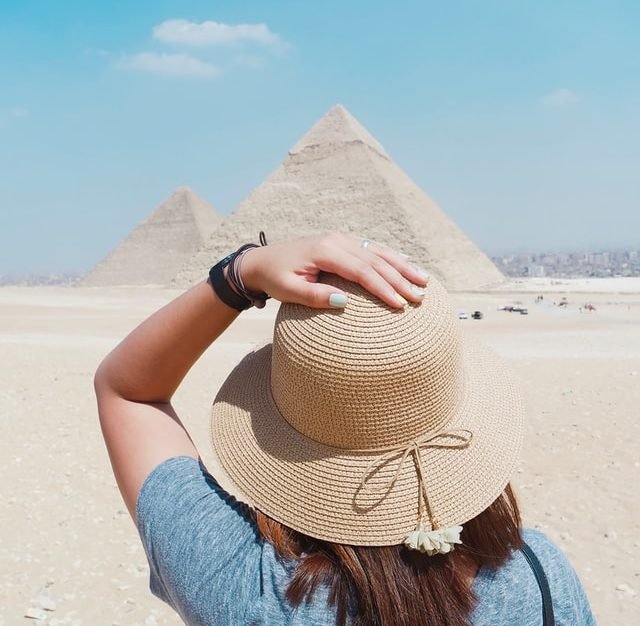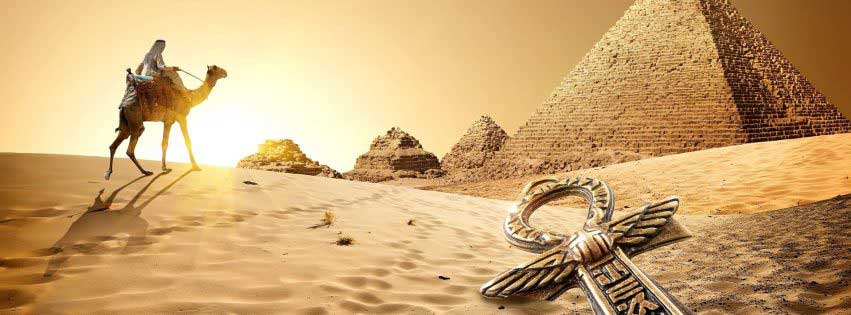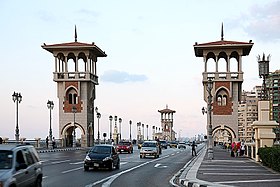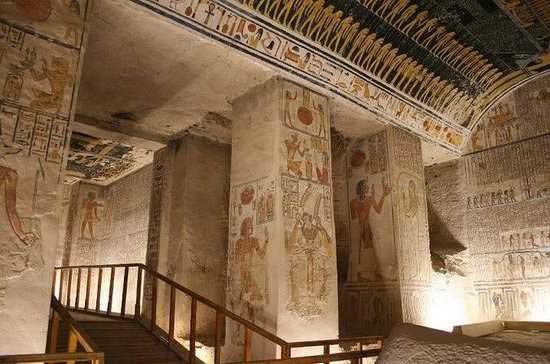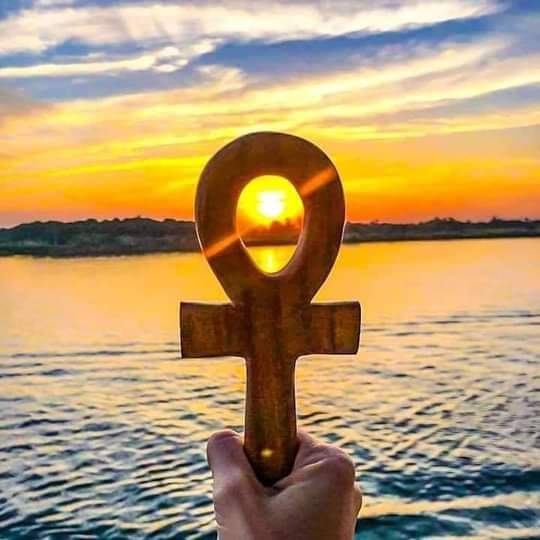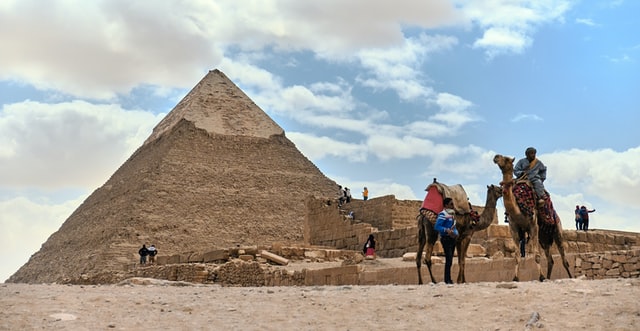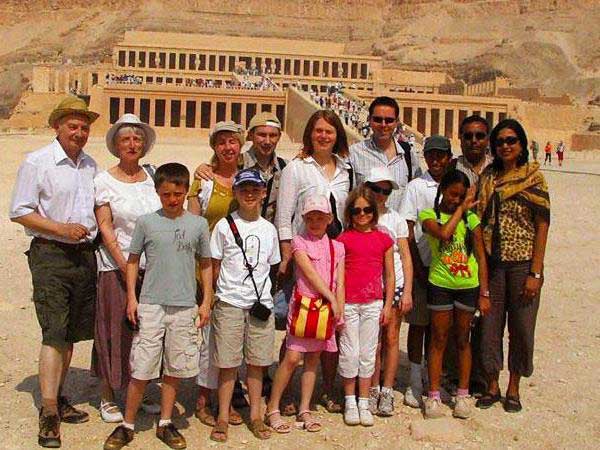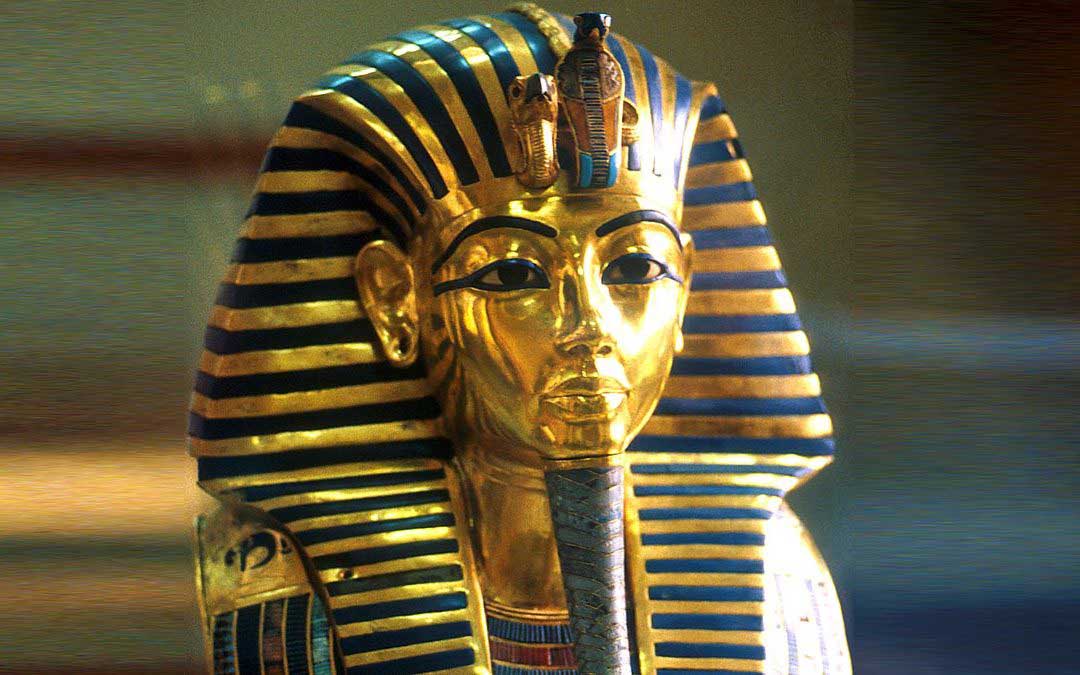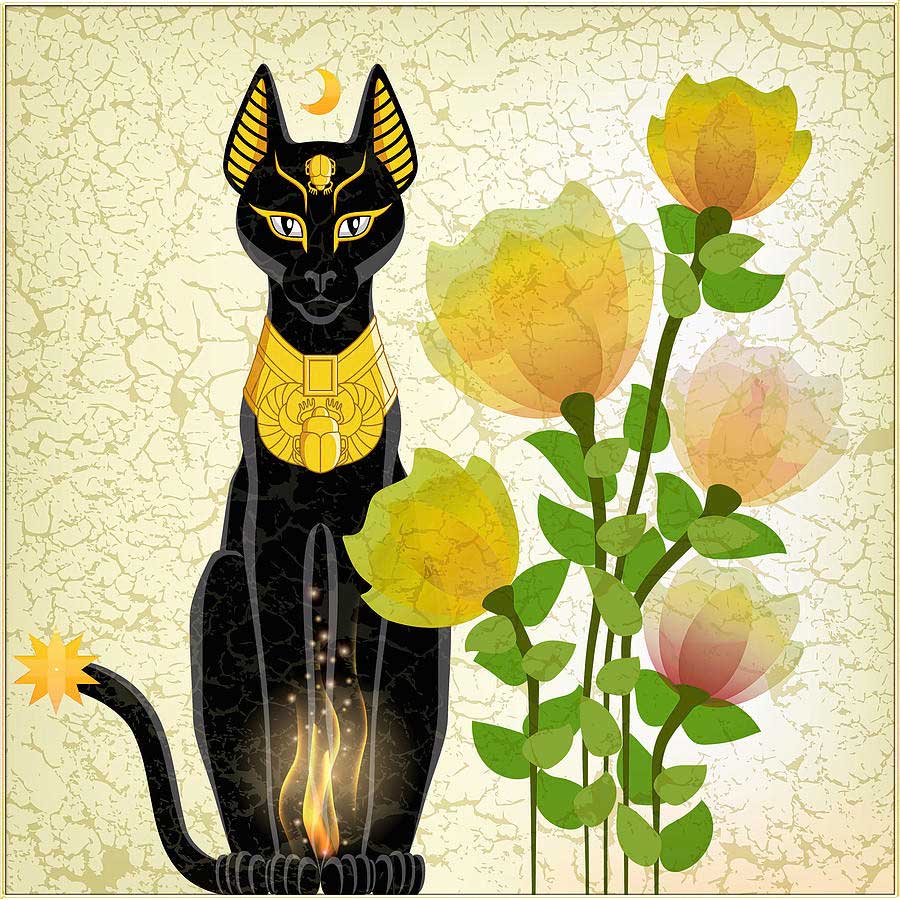King Tut
King Tut (or Tutankhamun) ruled Egypt as pharaoh for 10 years until his death at age 19, around 1324 B.C.
Tutankhamun was born in 1334 BC, at Amarana. His mummy shows that he died when he was nearly 18 years old, however, it’s argued when he died. His Body was damaged possibly before or immediately after his death. Tutankhamun, also spelled Tutankhamen or Tutankhamon, originally Tutankhanten, recently has been called as King Tut, known for his intact tomb KV 62 which was discovered in the valley of the kings in 1922. He was called the boy king because he ruled egypt when he was only nine years old.
Try to imagine a young boy stands in a temple filled with burning incense as he waits for a priest to place a glittering crown on his head. This ritual is part of the coronation ceremony that will make the nine-year-old pharaoh of ancient Egypt. His people will call him by his royal name: King Tutankhamun. You probably know him as just King Tut. He ruled the country at a time of conflict, when battles over land raged between Egypt and the neighboring kingdom of Nubia.
Genetic testing has verified that King Tut was the grandson of the great pharaoh Amenhotep III, and almost certainly the son of Akhenaten, a controversial figure in the history of the 18th dynasty of Egypt’s New Kingdom (c.1550-1295 B.C.). Akhenaten upended a centuries-old religious system to favor worship of a single deity, the sun god Aten, and moved Egypt’s religious capital from Thebes to Amarna.
Tutankhamun reversed Akhenaten’s reforms early in his reign, reviving worship of the god Amun, restoring Thebes as a religious center and changing the end of his name to reflect royal allegiance to the creator god Amun. He also worked in concert with his powerful advisers Horemheb and Ay—both future pharaohs—to restore Egypt’s stature in the region.
Artifacts from King Tut’s tomb have toured the world in several blockbuster museum shows, including the worldwide 1972-79 “Treasures of Tutankhamun” exhibitions. Eight million visitors in seven U.S. cities viewed the exhibition of the golden burial mask and 50 other precious items from the tomb.
This article contains information about King Tut including:
Who was king Tut?
Tutankhamun is one of pharaohs of the 18th dynasty, as is known in the history of ancient Egypt. He was the pharaoh of Egypt and its ruler from 1334 to 1325 BC during the New Kingdom. Tutankhamun is one of the most famous pharaohs. Although his rule was notable for reversing the tumultuous religious reforms of his father, Pharaoh Akhenaten, Tutankhamun’s legacy was largely negated by his successors. He was barely known to the modern world until 1922, when British archaeologist Howard Carter chiseled through a doorway and entered the boy pharaoh’s tomb, which had remained sealed for more than 3,200 years. The tomb’s vast hoard of artifacts and treasure, intended to accompany the king into the afterlife, revealed an incredible amount about royal life in ancient Egypt, and quickly made King Tut the world’s most famous pharaoh.
Genetic testing has verified that King Tut was the grandson of the great pharaoh Amenhotep III, and almost certainly the son of Akhenaten, a controversial figure in the history of the 18th dynasty of Egypt’s New Kingdom (c.1550-1295 B.C.).
Why is King Tut so famous?
The Reason why Tutankhamun is so famous is that his tomb was discovered entirely complete, containing a fabulous treasures that helped the egyptologists to better understand the process of mummification.
Tutankhamun’s tomb is still the only royal tomb discovered in Egypt that had not previously been broken into and raided by tomb robbers, making it one of the most famous and significant archeological discoveries of the 20th century. Today, the contents of King Tut’s tomb, including his iconic burial mask, are on display in the Egyptian Museum in downtown Cairo.
What does Tutankhamun mean?
Although the young king, buried in the small tomb discovered in the Valley of the Kings in November 1922 by the Egyptologist Howard Carter and his patron, Lord Carnarvon, is generally known by the name of Tutankhamun, it was not always the case. At birth, he was in fact named Toutankhaton, meaning ‘living image of Aton’, and subsequently some years later he changed his name to Tutankhamun, meaning ‘living image of Amon’, once he ascended the throne. This new first name reflected his desire to distinguish himself from the reign of Akhenaten (and from the worship of Aton, the solar disc) and affirm his allegiance to the Theban god Amon.
King Tut death
how old was king Tut when he died?
how did king Tut die?
Nearly a decade after coming to power, the young leader died at about 18. But historians didn’t know much about Tut until 1922. That’s when a British archaeologist named Howard Carter uncovered Tut’s tomb in Egypt’s Valley of the Kings. Soon after the mummy was uncovered, archaeologists tried to pry his body from the sticky sacred oils that coated the inside of his coffin. But such rough handling damaged the mummy and made it tough to tell what lead to Tut’s death. Scientists examined x-rays taken of King Tut’s mummy to attempt to determine his cause of death.
Some suspected he was murdered, perhaps poisoned. But modern technologies like 3-D scanning eventually revealed that the powerful king was actually in poor health—and even had a broken leg. Maybe the frail king tumbled from one of the chariots found in his tomb. With his immune system already weakened, Tut could have easily died of an infection in the busted bone if the crash itself didn’t kill him.
Though some experts suspect King Tut died as a result of injuries sustained while riding in a chariot, such as the one above, the lack of historical records means we’ll likely never know for sure what killed the young pharaoh.
Archaeologists aren’t quite ready to declare the mystery solved. Without records from that time period detailing exactly what happened, we may never know the whole truth about Tut’s death. But regardless of how he died, the treasures of Tut’s tomb make him the most famous mummy in the world.
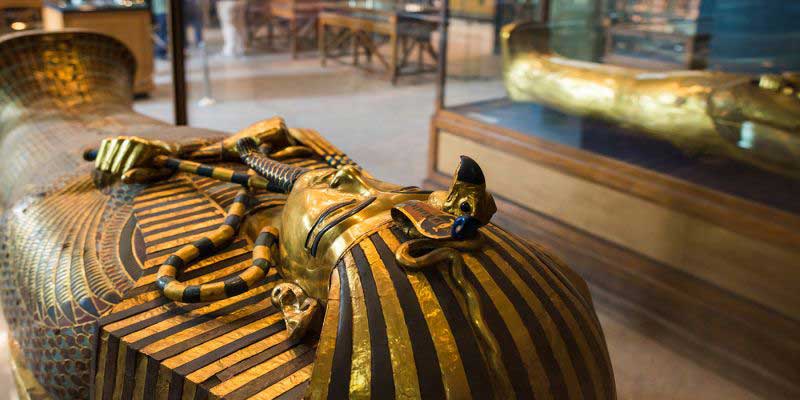
King Tut wife
There is little known about Ankhesenamun which means “she lives through Amun” or “Living through Amun”. In her early life years, She was originally known as Ankhesenpaaten which means” she lives through the Aten” or “living through the Aten”. The difference in her name occured due to changing the form of worship from one god to another. First, their religion god was the God Aten “known as the Sun-Disc” later on, was changed to the God Amun “Known as the hidden one”.
She was married to Tutankhamun when she was nearly thirteen years old, due to many historical theories, most likely she was his half-sister. King Tut possibly was eight years old when he married her. This Historical Period is known as Amarna Period.
The Egyptian pharaoh, Tutankhamun, died when he was only 18 years. He left behind his 19-year old wife Ankhesenamun, who was the last surviving member of the royal family. This put her in a precarious position. She was scared and, in an attempt to ensure her survival, she seeks the help of the Hittites king. Unfortunately, Ankhesenamun’s plan to receive help from the Hittites king failed when the prince was murdered on the borders of Egypt. This raises questions, such as who was Ankhesenamun afraid of? Who authorized the assassination?
king Tut tomb
The Discovery
Howard Carter
On November 4, 1922, a team headed by British Egyptologist Howard Carter began excavating the tomb of Tutankhamun in the Valley of the Kings, Egypt. Tutankhamun, nicknamed King Tut, was an Egyptian pharaoh who ruled from 1333 BCE (when he was just nine years old) until his death in 1323 BCE. After he died, Tutankhamun was mummified, according to tradition, and buried in a tomb filled with artwork, jewelry, and treasures. Shifting desert sands quickly hid the tomb, and it lay mostly hidden for more than 3,000 years.
On November 4, Carter’s team found the first step of a staircase. The next day, his team exposed the whole staircase, and by the end of November, an antechamber, a treasury, and the door to the tomb itself were uncovered. After making a tiny breach in the door, Carter saw a room filled with gold treasures on November 26. But it wasn’t until much later that the sarcophagus containing Tutankhamen’s mummy was revealed.
By the time he discovered Tutankhamun’s tomb in 1922, British archaeologist Howard Carter had been excavating Egyptian antiquities for three decades. At the time of the discovery, archaeologists believed that all the royal tombs in the Valley of the Kings, across the river from ancient Thebes, had already been cleared. Excitement about the new tomb—the most intact ever found—quickly spread worldwide. It took Carter and his team a decade to catalogue and empty the tomb.
The tomb of the Eighteenth Dynasty king Tutankhamun (c.1336–1327 BC) is world-famous because it is the only royal tomb from the Valley of the Kings that was discovered relatively intact. Its discovery in 1922 by Howard Carter made headlines worldwide, and continued to do so as the golden artifacts and other luxurious objects discovered in this tomb were being brought out. The tomb and its treasures are iconic of Egypt, and the discovery of the tomb is still considered one of the most important archaeological discoveries to date.
Despite the riches it contained, the tomb of Tutankhamun, number 62 in the Valley of the Kings, is in fact quite modest compared to the other tombs on this site, in both size and decoration. This is most likely due to Tutankhamun having come to the throne very young, and even then ruling for only around ten years in total. One can wonder at what riches the much larger tombs of the most powerful kings of the New Kingdom, such as Hatshepsut, Thutmose III, Amenhotep III, and Ramesses II once contained.
Only the walls of the burial chamber bear any decoration. Unlike most previous and later royal tombs, which are richly decorated with funerary texts like the Amduat or Book of Gates, which helped the deceased king reach the afterlife, only a single scene from the Amduat is represented in the tomb of Tutankhamun. The rest of decoration of the tomb depict either the funeral, or Tutankhamun in the company of various deities.
This small size of the tomb of Tutankhamun (KV62) has led to much speculation. When his successor, the high official Ay, died, he was buried in a tomb (KV23), which may have been originally intended for Tutankhamun, but which had not yet been completed at the time of the death of the young king. The same argument has been made in turn for the tomb of Ay’s successor, Horemheb (KV57). If so, it is unclear for whom the eventual tomb of Tutankhamun, KV62, was carved, but it has been argued that it existed already, either as a private tomb or as a storage area, that was subsequently enlarged to receive the king.
Whatever the reason, the small size of the tomb meant that the approximately 3,500 artefacts that were discovered inside were stacked very tightly. These reflect the lifestyle of the royal palace, and included objects that Tutankhamun would have used in his daily life, such as clothes, jewelry, cosmetics, incense, furniture, chairs, toys, vessels made of a variety of materials, chariots, and weapons.
It is one of history’s great ironies that Tutankhamun, a relatively minor king who was erased from history because he was related to the unpopular King Akhenaten, has come to surpass many of Egypt’s greatest rulers in fame.
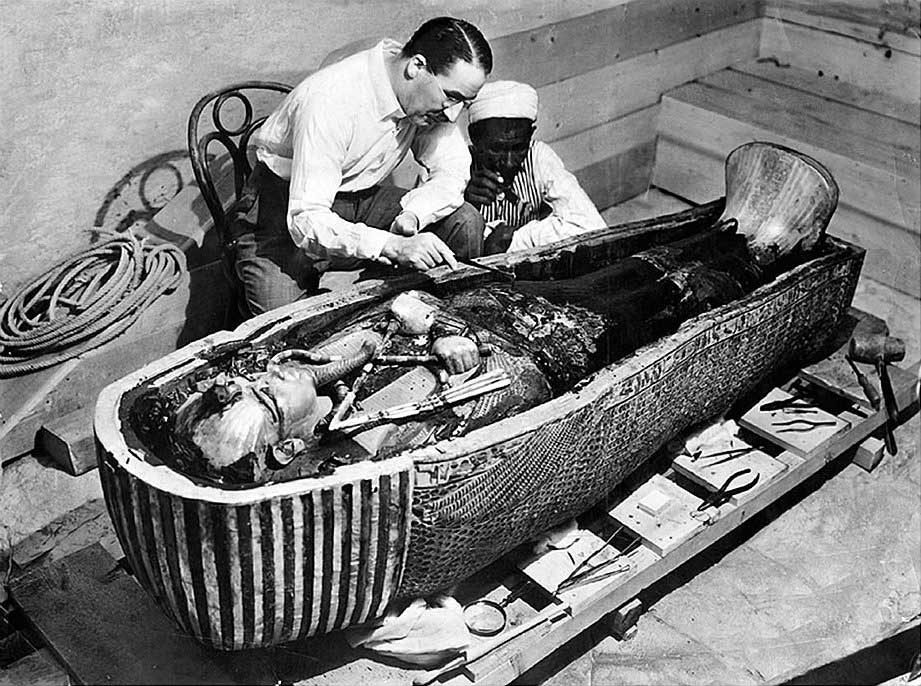
King Tut Mummy
After he died, King Tut was mummified according to Egyptian religious tradition, which held that royal bodies should be preserved and provisioned for the afterlife. Embalmers removed his organs and wrapped him in resin-soaked bandages, a 24-pound solid gold portrait mask was placed over his head and shoulders and he was laid in a series of nested containers—three golden coffins, a granite sarcophagus and four gilded wooden shrines, the largest of which barely fit into the tomb’s burial chamber.
Cause of Death
Because Tutankhamun’s remains revealed a hole in the back of the skull, some historians had concluded that the young king was assassinated, but recent tests suggest that the hole was made during mummification. CT scans in 1995 showed that the king had an infected broken left leg, while DNA from his mummy revealed evidence of multiple malaria infections, all of which may have contributed to his early death.
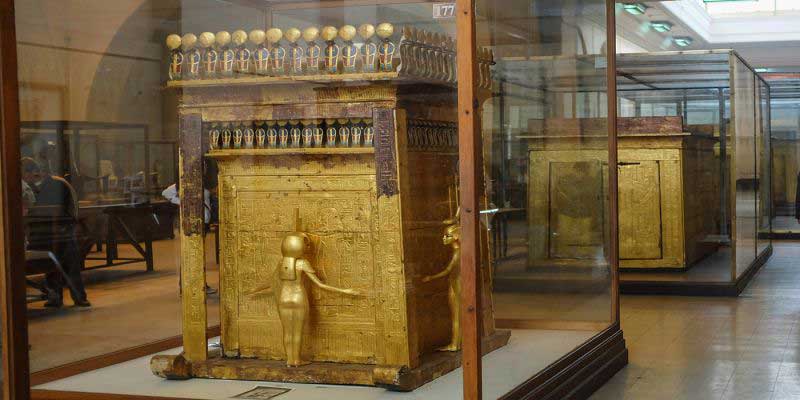
king Tut mask
The golden funerary mask is one of the most famous objects discovered in Tutankhamun’s tomb. It is a very popular object that travelled as part of the 1970s Tutankhamun exhibition, and one which many people have fond memories of.
The mask presents an idealised portrait of the king, or as described by historian Dan Snow “His Instagram Face”. The mask would allow the ba (soul) to recognise the mummy after its wanderings during the day. If something happened to the body, the mask would give it a place to reside. Gold, the never-tarnishing metal of which the bodies of gods were made, would last forever.
The artifact is about 54cm tall, 39cm wide and weighs 11 kilograms. Artisans created it in the form of the king wearing the nemes headdress with stripes inlaid with deep blue glass to imitate lapis lazuli. Inlays of semiprecious stones and glass paste form the broad collar, which ends in falcon heads. The curving beard on his chin, made of dark blue glass set into a framework of gold, signals his divine status, and the Two Ladies—the vulture and cobra goddess on his forehead—indicate his status as lord of the Two Lands, all of Egypt.
The face of the mask was finished with a thin layer of gold with a high silver content, giving it a distinctive radiance. Pieces of genuine lapis lazuli form the cosmetic lines of his eyes. When Carter found the object, gold foil covered large holes in the ears. On the back text associates parts of the mask and the body with various divinities.
Curse of the pharaohs
As famous as Tutankhamun and his burial treasure, deaths that occurred in the years that followed the discovery of the tomb revived the idea of a curse of the mummies, which emerged at the end of the nineteenth century. Lord Carnarvon’s untimely death in 1923 probably sparked off the idea and gave free reign to rumours about the curse of Tutankhamun, attributed to the poisons left by the ancient Egyptians in their tombs, and to mushrooms and toxic microorganisms, which affected all those who dared to enter the royal hypogeum. Yet, the man who discovered his tomb, Howard Carter, only died in 1939, at the age of sixty-four, and was probably spared from the young king’s vengeance.
It is also said that the two trumpets discovered in the tomb had magical properties, and, in particular, the power to summon war. Hence, on the evening they were played for the first time, in 1939, a power cut plunged Cairo’s Egyptian Museum into darkness and the recording was made by candlelight. Several months later, war broke out in Europe. The trumpets appear to have been played again before the Six Day War in 1967, before the 1990 Gulf War, and, more recently, before the Egyptian revolution of 2011. That was all it took to associate a new legend with the name of Tutankhamun.
Frequently asked questions about visiting Egypt
Is it safe to travel to Egypt
Is it safe to travel to Egypt?
Is Egypt Safe for Americans to Travel to
Is Egypt Safe for Americans to Travel to?
We get this question a lot at Bastet Travel In short, Americans and other visitors can rest easy: yes, Egypt is a safe country for tourists. And the rest of the world seems to agree — after years of middling numbers, tourism in Egypt is steadily rising towards its former highs, hosting over 9 million sightseers in 2018. The longer answer is worth exploring, though, and we have some assurances to offer all our clients who join us on all of our Egypt Travel Packages.Is it safe to visit the Pyramids
Is it safe to visit the Pyramids?
Definitely safe to explore Cairo and visit the pyramids, especially while being accompanied with your guide. Here are some of the best tours to Pyramids:Is it allowed to enter The Pyramids in Egypt
Is it allowed to enter The Pyramids in Egypt?
Tourists are allowed to enter all three of the great pyramids, for a fee, of course. That is, you can go into the Great Pyramid of Khufu, the Pyramid of Khafre, and the Pyramid of Menkaure as long as you pay for a ticket. That’s the good news. The bad news starts with the mundane issues of how hard it can be to get inside. You must first pay for a ticket (around $20) for general admission to the grounds, then for an additional ticket for each pyramid, between about $5 and $15. The total amounts up fast, especially if you’re traveling with your family. Second, ticket sales are not a smooth procedure. Changes occur in the process regularly, and you can never be sure of exactly what to expect. First, there’s often, but not always, a limit imposed on ticket sales for the smaller pyramids, those of Khufu and Khafre. This is usually 300 tickets per pyramid per day, but only 150 are offered in the morning, the rest are saved until the afternoon. People get annoyed and impatient and you may run into pushing and shoving.What are the most famous tourist attractions in Egypt
What are the most famous tourist attractions in Egypt?
Egypt has so much for travelers to see and do, it’s the perfect country for a mix of activities combining culture, adventure, and relaxation. Find the best places to visit with our list of the top tourist attractions in Egypt.- Pyramids of Giza
- Valley of the kings
- Luxor’s Karnak Temple
- The Egyptian Museum
- Christian and Islamic Cairo
- The White Desert and Baharyia Oasis
- Siwa Oasis
- Abu simbel Temples
- Aswan
- Alexandria
- St. Catherine’s Monastery
- The Nubian village
- Nile River Cruise
- Hurghada
- South of Sinai
How Much will I have to pay as a deposit
What is the best Nile cruise in Egypt
What is the best Nile cruise in Egypt?
M/S Mayfair Cruise. Mövenpick Royal Lily Cruise. Mövenpick Royal Lotus Cruise. Ms. Concerto Nile Cruise Princess Sarah Nile Cruise Sonesta Moon Goddess. Oberoi Philae Nile Cruise. Oberoi Zahra Nile Cruise. Sonesta Star Goddess Cruises. M/S Esplanade Cruise. Nile Goddess Cruise.Do and do not in Egypt
Do and do not in Egypt
Do respect the monuments archaeological sites are human heritage don’t touch scratch or sit on it. Do dress correctly whilst there is no specific dress code in the cities, women will feel more comfortable if they do not wear shorts or have their shoulders uncovered.What do female tourists wear in Egypt
What do female tourists wear in Egypt?
Pants, Capris, Leggings, and Shorts Basically, as long as your knees are covered, you are good. So whether you choose pants or capris, you will feel comfortable and remain respectful. Local women wear long pants or skirts; however, I wore capris a couple of days with no issues.What do you wear on a Nile Cruise
What do you wear on a Nile Cruise?
There are no “formal nights” or other theme nights on Nile Cruises, so you can just go with resort casual. Slacks are fine, as are dresses. Bare shoulders are acceptable in the cruise dining room, so feel free to wear what you feel good in.How Much does a Nile River Cruise Cost
How Much does a Nile River Cruise Cost?
The cost of a standard Nile River cruise between Luxor & Aswan will range from $450 to $750 for 3,4, or 7 nights. The cost of a high Luxury Nile River cruise between Luxor & Aswan will range from $790 to $1299 for 3,4, or 7 nights.How Much does an Egypt vacation package cost
How Much does an Egypt vacation package cost?
Starting from only $950, a package is your passport to inexpensive travel. Custom build your Egypt trip by choosing from our comprehensive range of airfares, hotels, and rental cars.What is the best time to visit Egypt
What is the best time to visit Egypt?
How many days are enough to visit Egypt
How many days are enough to visit Egypt?
What are the best day trips in Egypt
Is it a common practice to give tips in Egypt
Is it a common practice to give tips in Egypt?
What kind of Transportation can be used to move in Egypt cities
What kind of Transportation can be used to move in Egyptian cities?
How can I obtain my Visa to visit Egypt?
How can I obtain my visa to visit Egypt?
Is Abu Simbel worth visiting?
Is Abu Simbel worth visiting?
Absolutely! The temples of Abu Simbel are some of most impressive and unique temples you will see in Egypt, so it is well worth the visit.Why is Abu Simbel famous?
Why is Abu Simbel famous?
It was dedicated to the gods Amun, Ra-Horakhty, and Ptah, as well as to the deified Ramesses himself. It is generally considered the grandest and most beautiful of the temples commissioned during the reign of Ramesses II, and one of the most beautiful in Egypt.How far is Abu Simbel from Luxor?
How far is Abu Simbel from Luxor?
The distance between Luxor and Abu Simbel temples is 388 km. The road distance is 477.5 km.What are the best tours in Aswan?
What are the best tours in Aswan?
These experiences are the best in Aswan Visiting Philae temple. Aswan High Dam, and the Unfinished Obelisk Private Day Tour to Abu Simbel Temples from Aswan 2 nights Nile cruise includes tours from Aswan to luxor 4-Day 3-Night Nile Cruise from Aswan to Luxor – Private Tour Aswan day tour from Marsa Alam 2 days trip to Aswan and Abu Simbel from Marsa Alam 2 days trip to Aswan and Abu Simbel from Hurghada Kalabsha temple and the Nubian museum tourWhat are the best tours in Luxor?
What are the best tours in Luxor?
How many days do you need in Luxor?
How many days do you need in Luxor?
How do you get to Luxor?
How do you get to Luxor?
Is Luxor worth visiting?
Is Luxor worth visiting?
What are the best tours in Cairo
The best tours in Cairo are:
Day-Tour to Giza pyramids, Sphinx & Egyptian Museum & 30 M Camel Ride& Bazaar Guided Tour Giza Pyramids, Sphinx, Lunch, One Hour Quadbike Half-Day Tour from Cairo: Dahshur Pyramids Sakkara and Memphis City
3 DAYS TRIP TO THE WHITE DESERT AND bAHARYIA OASIS FROM Cairo Alexandria trip from Cairo Visiting the Coptic and Islamic CairoIs Cairo worth visiting?
Is Cairo worth visiting?
In my opinion, Cairo is much more worth it than Sharm. Even if it doesn’t turn out to be your favorite place, take it as an authentic experience (unlike Sharm). You certainly will get some hassle, but don’t take it as harassment, it’s just people trying to make a living and not meant as aggression.Is Cairo safe to visit?
Is Cairo safe to visit?
Generally speaking, Egypt is a safe country to visit, especially if you’re going to the cities most frequented by tourists, such as Cairo, Alexandria, or the resort towns around the Red Sea.What do i need to know when traveling to Egypt?
A few Things to Know Before Traveling to Egypt
You need a visa, and you can buy it upon arrival. The dollar goes far in Egypt. The traffic in Cairo/Giza is outrageous, but taxis (and Ubers) are cheap. You should not skip the Pyramids and Sphinx. The Pyramids and Sphinx are just the beginning of the ancient treasures. Islamic Cairo is amazing. Aswan should not be missed The Sahara is more than sand It is safer than you thinkDo I have to wear a hijab in Egypt?
Do I have to wear a hijab in Egypt?
Wrapping your head up, hijab style is not required in Egypt. However, you will find, if you make an effort to cover your head, that the locals are appreciative.What are the best tours in Hurghada
The best tours in Hurghada
Luxor day tour from Hurghada Overnight trip to Luxor from Hurghada 2 Days trip to Aswan and Abu Simbel from Hurghada 2 Days trip to Luxor and Aswan from Hurghada Visit Cairo and the world-famous Pyramids of Giza from Hurghada 6 Hours Quad Bike Safari in Hurghada Dolphin House and Banana Boat Fun from Hurghada Full-Day Snorkeling with Dolphins in Hurghada with Lunch Red Sea Snorkeling from Hurghada Hurghada Daily Scuba Dive Trip Enjoy a guided tour of the city of Hurghada Take about a tour to the Giftun island Enjoy snorkeling in the beautiful sea Try some of the best local dishes on food tours Spend a day in Luxor Feel the adrenaline by joining a quad bike tourWhat are the best tours and activities in Marsa Alam
The best tours in Marsa Alam
Luxor Full DAY TOUR FROM Marsa Alam Aswan day tour from Marsa Alam 2 Days trip to Aswan and Abu Simbel from Marsa Alam Full-Day Guided Private Tour to Pyramids of Giza Dahshur Sakkara and Memphis 2 Days trip to Luxor and Aswan from Marsa Alam 2 Days trip to Luxor from Marsa Alam Amazing Egypt sailing Nile cruise from Aswan to Luxor&Abu Simbel for 3 nights 4 Days Nile Cruise Luxor, Aswan, Abu Simbel with Train Tickets from Cairo Wadi El Gemal – Safari and TrekkingHow far is Cairo from Marsa Alam
How far is Cairo from Marsa Alam?
The distance between Cairo and Marsa Alam is 661 km. The road distance is 737.6 km.How far is Marsa Alam from the Pyramids
How far is Marsa Alam from the Pyramids?
The distance between Marsa Alam and the Pyramids of Giza is 660 km.Is it safe to travel to Marsa Alam
Is it safe to travel to Marsa Alam?
The main tourist areas are considered generally safe to visit, though you should always check the latest government advice before traveling. There are some parts holidaymakers are not advised to visit, though this does not refer to the popular resorts of Hurghada, Luxor, or Marsa Alam for example.How far is Luxor from Marsa Alam
How far is Luxor from Marsa Alam?
The distance between Marsa Alam and Luxor is 237 km. The road distance is 355.7 km.Which resorts in Sharm el sheikh are good for couples?
Which resorts in Sharm el sheikh are good for couples?
Which resorts in Sharm el sheikh are good for families?
Which resorts in Sharm el sheikh are good for families?
How much does it cost to stay in a resort in Sharm El sheikh?
How much does it cost to stay in a resort in Sharm El sheikh?
What are the best tours in Sharm El sheikh?
What are the best tours in Sharm El sheikh?
What are the top attractions to visit in Sharm El Sheikh?
What are the top attractions to visit in Sharm El Sheikh?
What are the best day trips from Sharm El Sheikh?
What are the best day trips from Sharm El Sheikh?
Is Alexandria worth visiting?
Is Alexandria worth visiting?
Is it safe to travel to Alexandria?
Is it safe to travel to Alexandria?
How many days do you need in Alexandria?
How many days do you need in Alexandria?
Is a day trip to Alexandria worth it?
Is a day trip to Alexandria worth it?
What are the best tours and activities in Alexandria?
What are the best tours and activities in Alexandria?
Is the white desert safe?
Is the white desert safe?
How far is the white desert from Cairo?
How far is the white desert from Cairo?
Where is the white desert?
Where is the white desert?
Is there anything in the white desert?
Is there anything in the white desert?
How do you spend a day trip in Fayoum?
How do you spend a day trip in Fayoum?
How do you get from Cairo to Fayoum?
How do you get from Cairo to Fayoum?
What are the best tours to Al Fayoum?
What are the best tours to Al Fayoum?
What does Philae mean?
What does Philae mean?
What are the powers of Isis?
What are the powers of Isis?
Why was the Temple of Philae built?
Why was the Temple of Philae built?
Where is the temple of Philae located?
Where is the temple of Philae located?
How old is Philae Temple?
How old is Philae Temple?
How old is Philae Temple?
How old is Philae Temple?
Who is Isis the goddess?
Who is Isis the goddess?
When was Philae Temple built?
When was Philae Temple built?
Related Articles
Related
Seth
Also known as Set, Setekh, Suty and Sutekh, Seth was the god of chaos, darkness, violence, evil, deserts, storms, and one of the Osirian gods. In the Osiris myth, he is the murderer of Osiris (in some versions of the myth, he tricks Osiris into laying down in a coffin and then seals it shut.)
Ancient Egyptian Gods And Goddesses
For all ancient Egyptians, the world was filled with mystery. Much of what they experienced in the world around them was unknowable and frightening. The ancient Egyptian gods and goddesses represented aspects of the Egyptians’ natural and “supernatural” surroundings and helped them understand its many aspects.
Horus
Depicted as a falcon or as a man with a falcon’s head, Horus was a sky god associated with war and hunting. He was also the embodiment of the divine kingship, and in some eras the reigning king was considered to be a manifestation of Horus.


